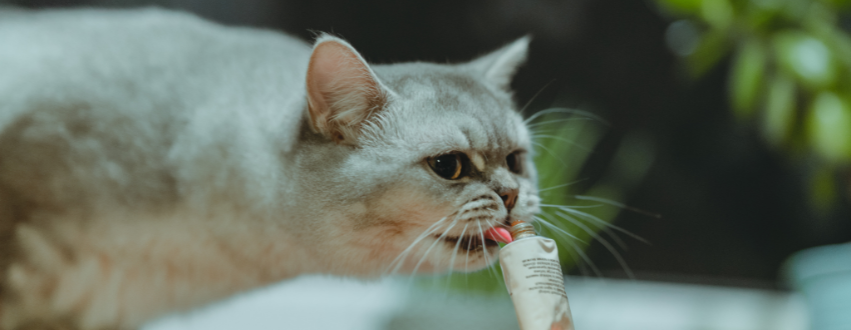We all want the best for our pets and that includes feeding them a well-rounded diet that promotes health and vitality. We also like to give them a tasty treat every now and then. Just like humans, cats sometimes like a special snack in-between their meals. Cat treats can add variety to their diet and can also be used for training purposes.
We are often asked about whether treats are healthy for cats and also whether they’re fattening. In this article we aim to answer these and more of your frequently asked questions regarding cat treats.
Are cat treats bad for cats?
Any kind of food, even really healthy foods, can be bad if not fed in the correct quantities. The main thing to consider is how much of a particular food or treat you feed your cat. Of course, some treats are healthier than others; some have more fat content, whilst some have very little. It’s all about reading the packaging and serving them accordingly. If the treats you’ve bought have a high calorie content, then you should feed them sparingly and consider what else you are feeding them. Every treat manufacturer will give a serving suggestion on the packaging. Never feed more than is recommended and always feed as part of a balanced diet. If you keep this in mind, then you can’t go too far wrong.
Filling up on treats can mean your cat doesn’t get the nutrition they need from their proper food. Ensure you keep treats to a minimum and feed as part of a balanced diet.
As far as daily treating goes, we’d suggest finding some healthy treats that are high in meat content with few to no additives. Treats such as the Pet Munchies Gourmet Treats are ideal as they are all natural and provide lots of nutritious goodness. We have lots of healthy cat treat options in our Cat Emporium, from brands including Lily’s Kitchen and The Innocent Cat.

Can treats make a cat sick?
The answer to this is simple, cat treats don’t make your cat sick, but overeating or eating too quickly can make them sick! Again, the main thing to consider is portion size and ensuring that you only feed treats as part of a well-balanced diet. Treats should only make up about 10% of your cat’s daily intake with the rest being divided by their wet and dry foods. If you exceed this, then you risk your cat becoming overweight.
If your cat is sick, it’s important to consider why. Do they eat too quickly? If so, consider buying them a slow feeder or feed as part of an interactive game to help slow them down. There are other reasons they could become sick too, such as upset tummies caused by allergies or some other health condition. If you’re feeding the correct quantities and your cat isn’t guzzling their food, then chat to your vet to get their advice. Your cat may have an intolerance or other health problem.
Are cat treats fattening?
Anything can be fattening if fed in the wrong quantities. As humans, we can treat ourselves to cake every once in a while, without gaining weight, but if we were to eat it every day, we’d probably notice the pounds piling on! It’s just the same for our cats. It’s absolutely fine to feed your cats a few treats every day, but make sure you feed according to the manufacturer’s guidelines and only as part of a balanced diet.
If you’re worried about the calories and health implications of cat treats, consider trying a Catit Senses 2.0 Grass Planter with Cat Grass. This is an indoor grass designed especially for cats to graze on. It’s completely healthy for them to eat and can actually aid their digestion and help prevent hairballs. A brilliant option for people who are worried about their cat gaining weight. Cat grass is also useful as a distraction from your main houseplants. If your cat is always trying to munch on your Monstera then providing tasty cat grass may just be the distraction you need!
How often should you give a cat treats?
This can depend on the specific treats you’re serving. The popular Dreamies cat treats have a serving suggestion of up to 20 treats per day, whilst the Innocent Cat Treats have a serving suggestion of up to 6 per day. The important thing here is to check the specific treats you have chosen.

When to give cats treats
When you choose to feed your cat their treats, really comes down to you and your lifestyle. We like to feed our cats one or two treats at various times throughout the day, but you may wish to serve them in one or two servings at the beginning and end of the day.
Don’t forget that treats don’t just have to be served as a snack but could be used as a reward when training as well. You may wish to serve them only when your cat shows good behaviour such as using their litter tray or sleeping in their bed. Just remember that the same feeding guidelines stand whether the treats are for training or as a snack - don’t go over the recommended feeding guide and feed them as part of a complete diet.
































































































